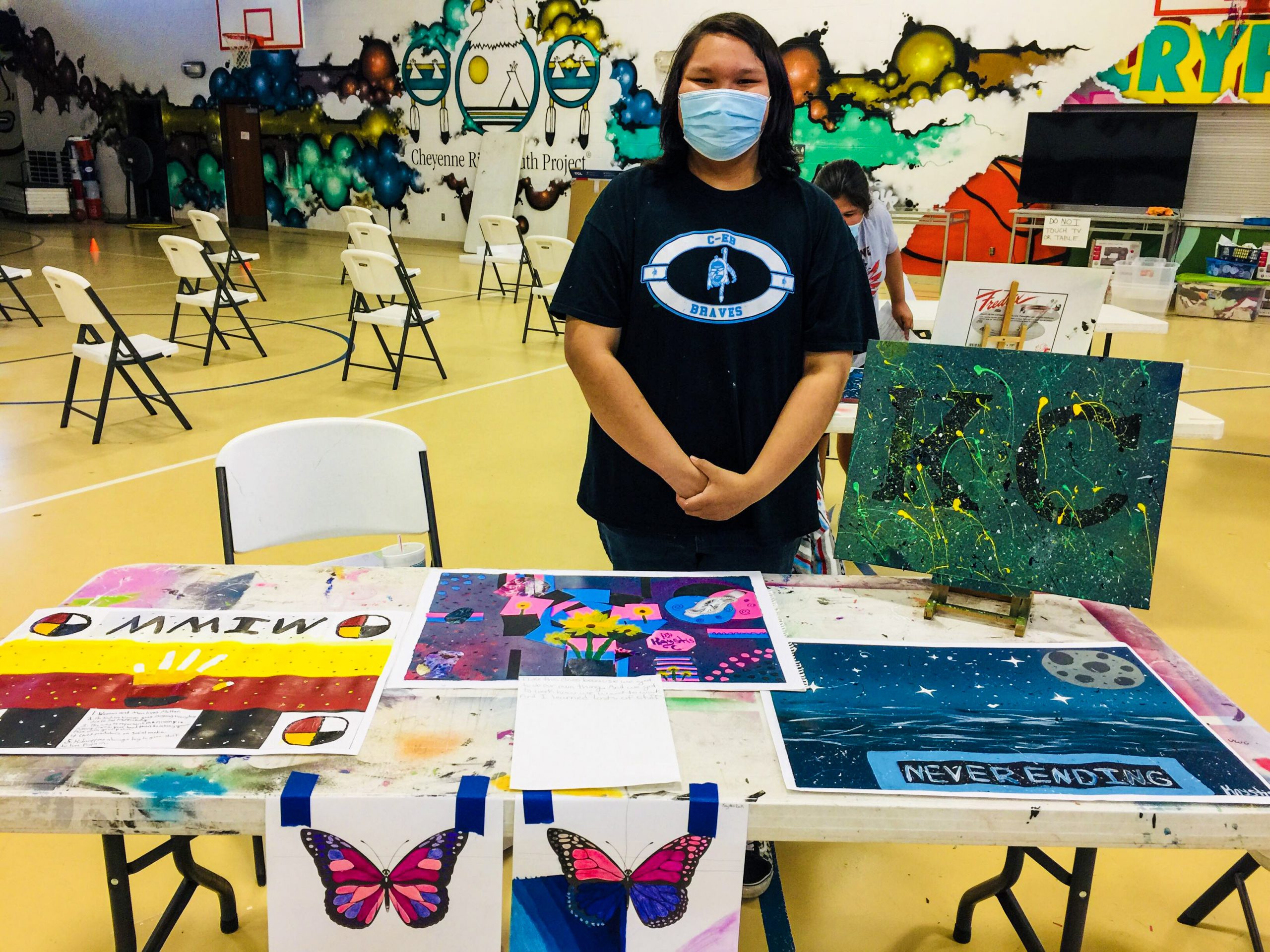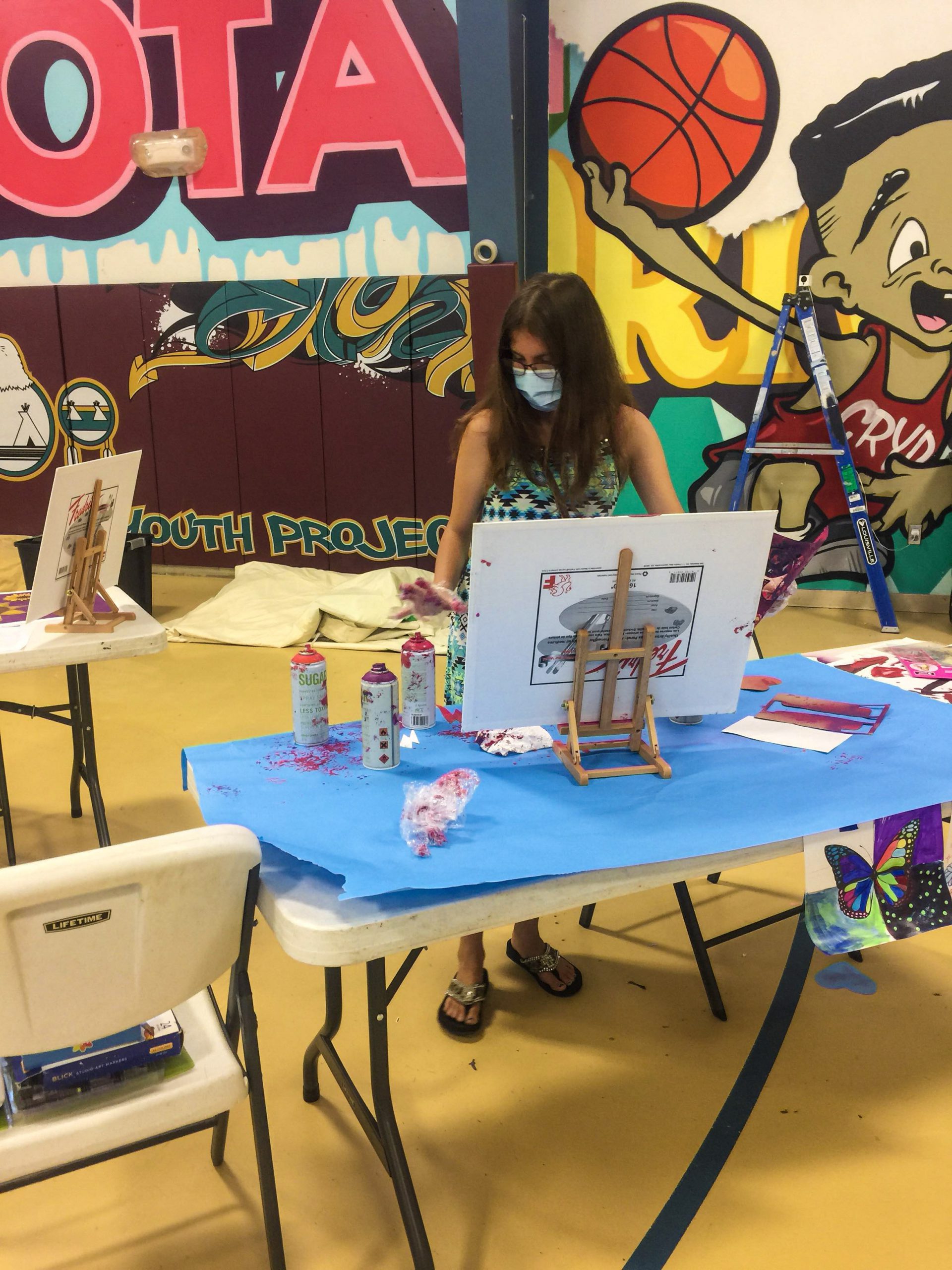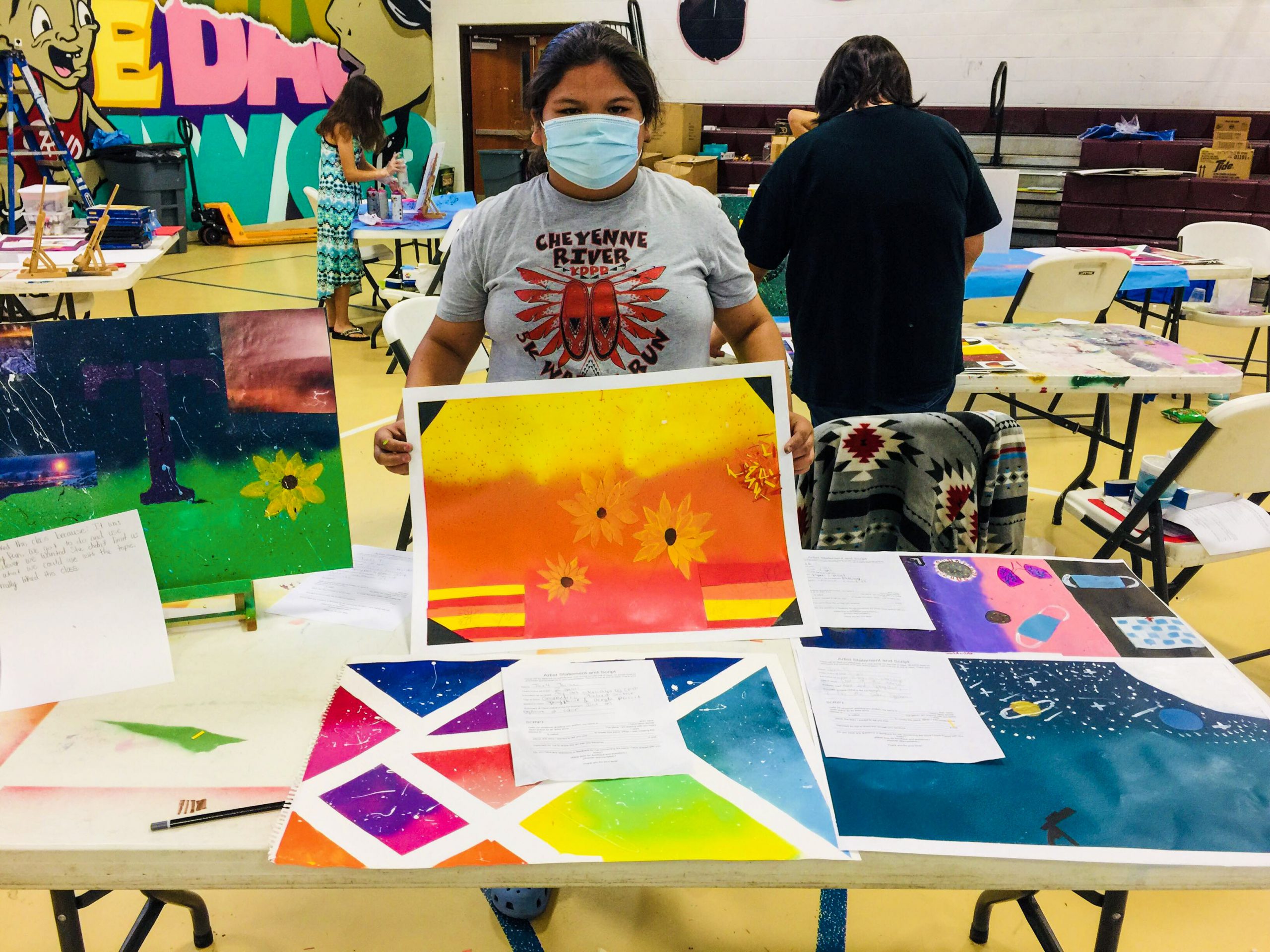
Photo courtesy Cheyenne River Youth Project
EAGLE BUTTE, SD (June 29, 2020) — Although this summer isn’t a typical one thanks to the ongoing Covid-19 pandemic, it’s still off to a busy start at the Cheyenne River Youth Project. The nonprofit organization, located in the heart of South Dakota’s remote Cheyenne River Sioux Reservation, is working hard to ensure that Lakota youth still have access to arts, culture, education, and inspiration with positive role models and safe spaces.
Not only is CRYP providing online “distance learning” camps with accomplished guest instructors outside Cheyenne River’s borders, it is inviting local Lakota artists to provide in-person instruction to small groups of teens in the Cokata Wiconi (Center of Life) gymnasium, which staff members have transformed into safe, socially distant learning center. The classes run the gamut, from mask- and moccasin-making to painting, mixed media, and native wellness.
According to Julie Garreau, CRYP’s executive director, these camps and classes create valuable connections for the young people, and they foster healing.
“For just a moment, they can put the many stresses of the world, their daily lives, and their families aside, and think deeply without worrying about all those other things,” Garreau explained. “These classes are so important to them, to lift the burden just a bit. Art heals, safe spaces heal, good role models heal.

Photo courtesy Cheyenne River Youth Project
“At CRYP, we are dedicated to providing the opportunities and resources that our kids need, in terms of creating, learning, and yes, healing,” she continued. “That means big-picture program planning, but it also means details, like making sure each child has a Chromebook to use for these distance-learning camps. We listen to our kids, we respect what they need, and we are working very hard right now to reach them, in every way we can.”
“We’ve had to innovate to meet the challenges presented by the pandemic,” said Tyler Read, CRYP’s art director. “In recent weeks, we’ve implemented an online creative hub that offers an array of art lessons in video form, and we’ve invited art instructors and culture bearers from across the country to offer distance-learning camps via Zoom, so they can connect with and guide our youth.”
The first such camps took place in late May and early June, when Michigan-based native artist Michelle Reed taught multiple classes of Cheyenne River teens to sew protective face masks for themselves and their relatives. Reed’s own masks have become wearable art, with each popular piece fearing intricate, beautiful appliqué; she helped the young people with Missing & Murdered Indigenous Women-inspired masks as well.
“On July 14-16, we’ll host our second online distance-learning camp, with is Moccasin Making with Black Hills culture bearer Jozee Campos,” Read advised. “The class will be able to host a maximum of 10 students.”
During the distance-learning camps, students sit in workstations that are spaced a minimum of 6 feet apart. They communicate with each other and the instructor through laptops at each table; the computers share video feed of each participant as they work through their project.
“We miss the creatives who have funneled into our community to work hands-on with our youths and we value the bridge it creates between the kids and other communities, but our top priority right now is to keep our community safe,” Read said. “Additional screen time is never ideal, but distance learning through technology is providing a path forward for us.”

Photo courtesy Cheyenne River Youth Project
Also helping to blaze that path forward are local Cheyenne River artists like Tammy Granados, who taught “Expressive Mixed Media” at Cokata Wiconi on June 23. In this art class, participants focused on the theme of sunflowers.
“My only direction was to tie ourselves together as a group with sunflowers,” Granados said. “I told them not to think, not to try — just to do! Even if it doesn’t make sense or look right. Expressive mixed media means we aren’t waiting for someone else to tell us what our art should look like. We get to decide.
“They went to town!” she continued. “One young lady named her piece ‘Mixed Emotions’ and talked about how amazing she knows she is. I loved her creativity. Another named hers ‘Sunflower Queen’ because although she’s going through some problems, but she won’t think less of herself; she’s a queen who loves to sing and dance. We started with a room full of shy flowers, but by the end, we were looking to the sun — the kids started to understand how art can tell stories and emotions, and how we can draw strength from our artwork.”
Also in late June, CRYP’s teen interns enjoyed a special class with guest instructor Julia Williams. In this class, they made some good medicine for their families: hand sanitizer, lip balm, healing salve, and bath salts; the products were easy to make and featured all-natural ingredients.
“We can’t help what’s happening at the present, as far as the pandemic is concerned,” Read said. “We can, however, help our youth invest in themselves and their futures by providing whatever resources we have available. We’re working hard to provide those resources, and the kids are responding well. They’re inspired, and they’re looking forward to what’s next.”
To learn more about the Cheyenne River Youth Project and its programs, and for information about making donations and volunteering, call (605) 964-8200 or visit lakotayouth.org. And, to stay up to date on the latest CRYP news and events, follow the youth project on Facebook (/LakotaYouth), Twitter (@LakotaYouth) and Instagram (@lakotayouth and @waniyetuwowapi).
Indian Health Service Announces New Deputy Director for Quality Health Care and Enterprise Risk Management (Indian Health Service)
Federal Emergency Management Agency (FEMA)
White House Office of Management and Budget (Joe Biden Administration)
Tuba City Regional Health Care Corporation (Arizona, Navajo Nation)
Oklahoma City Indian Clinic (OKCIC)
Indian Health Service (Department of Health and Human Services)
Navajo Nation Town Hall (Arizona, New Mexico, Utah)
Navajo Nation (Arizona, New Mexico, Utah)
Tribal organizations statement on advance appropriations for Indian Health Service
Indian Health Service Statement on Advance Appropriations (Department of Health and Human Services)
Indian Health Service (Department of Health and Human Services)
Indian Health Service (Department of Health and Human Services)
Navajo Nation (Arizona, New Mexico, Utah)
Indian Health Service (Department of Health and Human Services)
